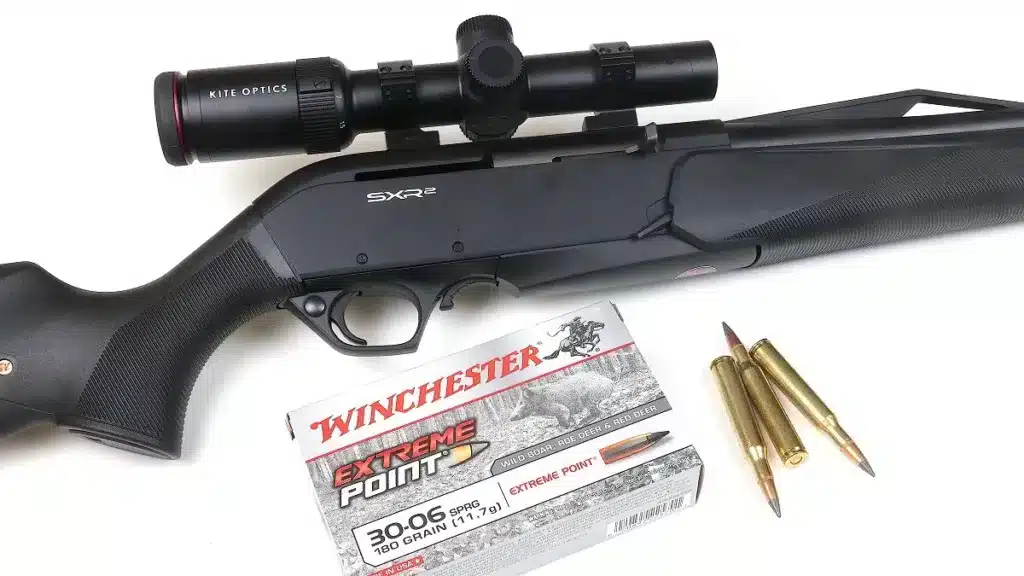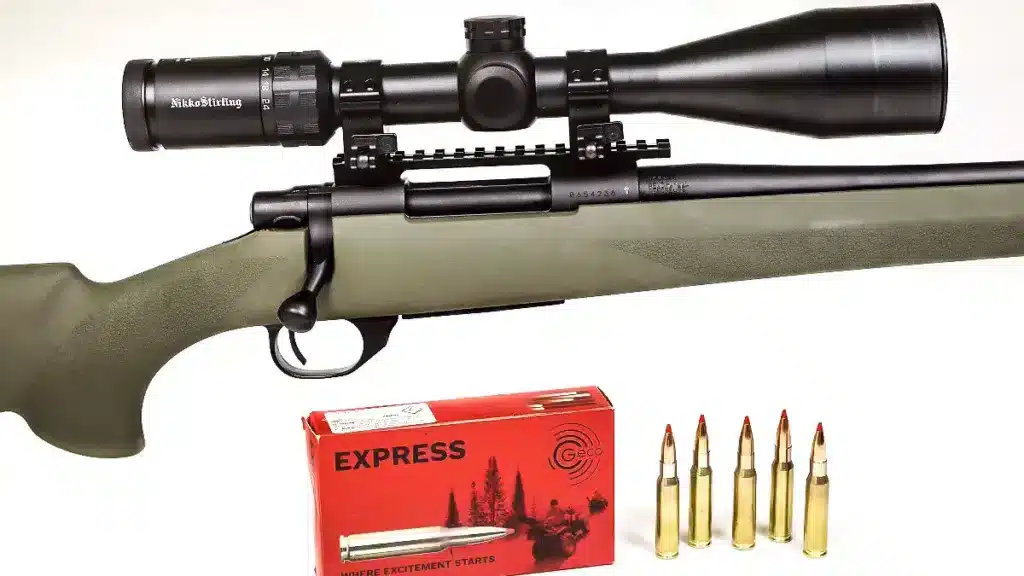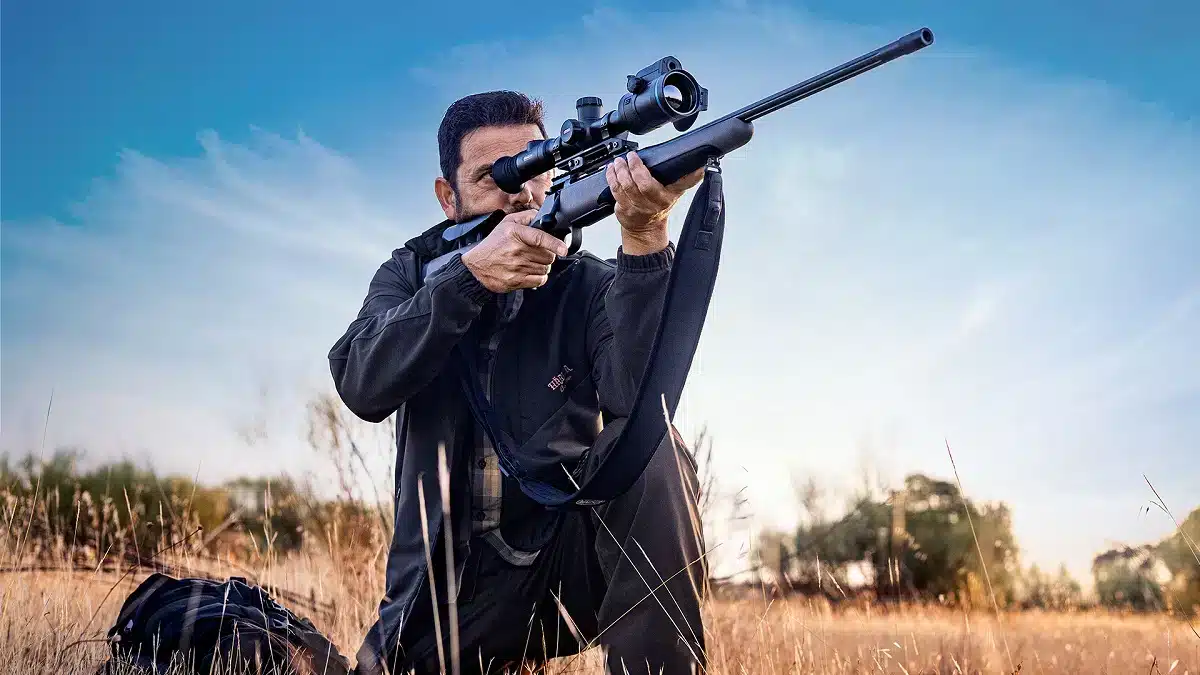In 2006 Winchester introduced the semi-automatic SXR Vulcan, which was the last Winchester rifle designed in New Haven (United States) by the Research and Development Section of the U.S. Repeating Arms Company (USRAC), the company that succeeded the mythical Winchester Repeating Arms, in whose facilities the guns that conquered the West were manufactured.
SXR stands for ‘Super X Rifle’, and they didn’t give it a bad name because it really was a super rifle that worked impeccably for 15 years until Winchester – read the Browning Group, which now owns the company – decided to modernise it… but without modifying its reliable mechanism with an adjustable gas lift, nor the bolt it used – rotary with seven lugs in the head – nor the type of barrel it used – FN made by cold hammering – nor its length, 53.5 centimetres, because with these basic ingredients the SXR Vulcan had proved to be very accurate and reliable regardless of whether it was reloaded for standard or magnum cartridges.
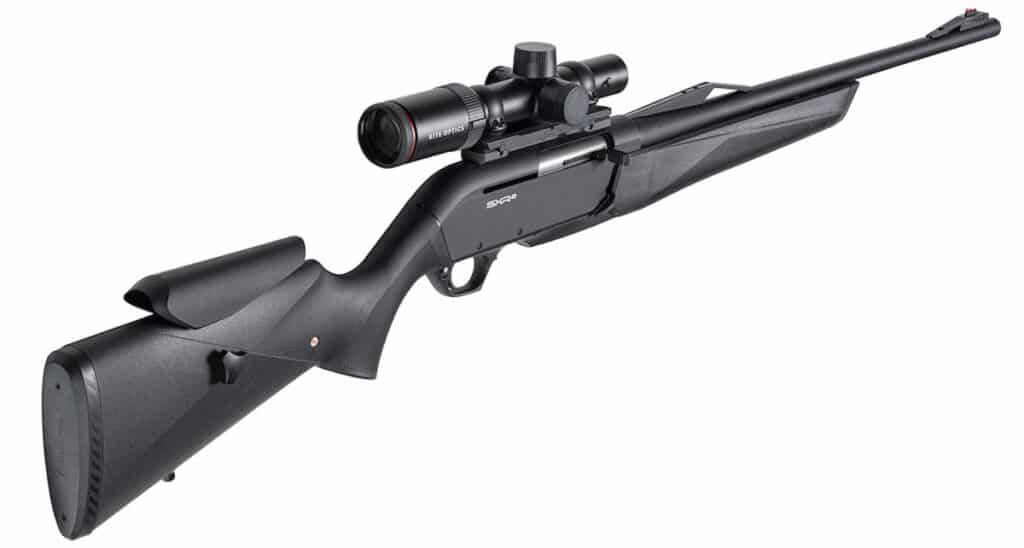
The new SXR2 – in which the word Vulcan is no longer used – has also inherited from the original model the frame, which is made of aluminium, the trigger, regulated by the manufacturer so that it can be used in stalking or hunting at approximately 1.4 kilos, and the locking indicator, a red dot in the ejection window – the latter, an unusual detail in 2006 that was highly valued because it allowed the rifle to close slowly, without having to release the bolt suddenly and, therefore, without making noise.
Nor was its high price-quality ratio changed, as the Vulcan was launched on the market finished in wood with a price of 1,069 euros and, 15 years later, today the SXR2s cost 1,199 euros -Composite- and 1,239 euros -wooden-.
Renew or die
Over the last 15 years, semi-automatic rifles have been getting new finishes and features, while, especially from an ergonomic point of view, the SXR Vulcan had become a bit outdated, which is why the brand’s managers felt it was necessary to modernise it. As a result, they created the SXR2 with the same barrel as the old model, but while the original was blued, the current ones are protected against corrosion and equipped with a fixed rear sight with contrasting white line and newly designed adjustable fibre sights that allow for quicker alignment of the sights.
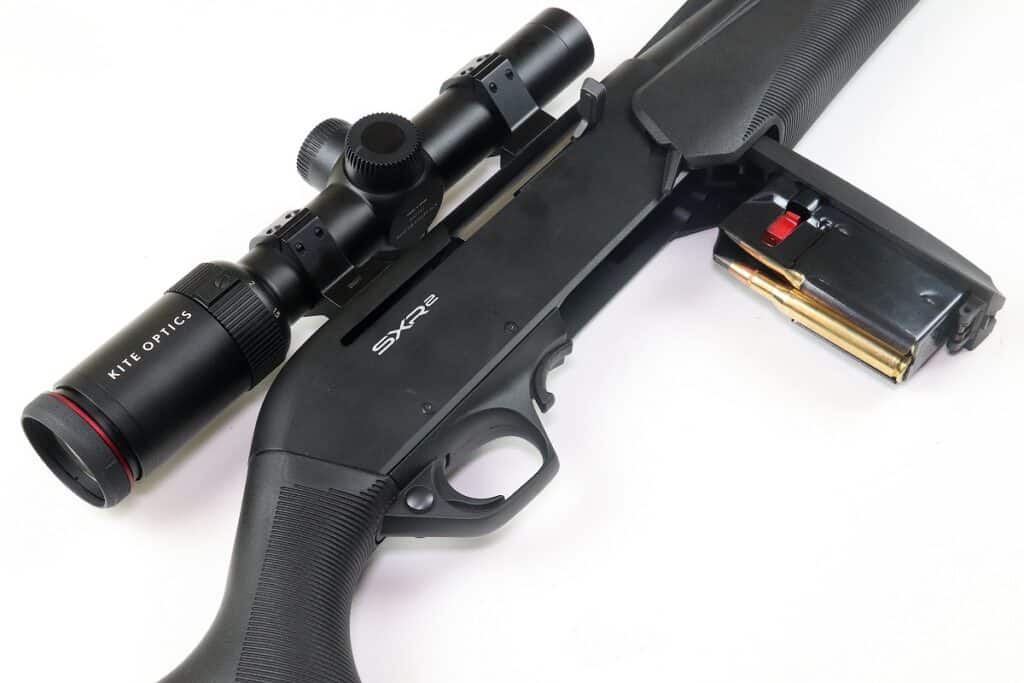
The SXR2s are fitted with a metal tilting magazine with a red synthetic elevator plate, which is associated with a slide catch – or slide leveller, like the magazine, also typical of Browning – that allows the bolt to be held open and closed when pressed, for example, to quickly insert a round into the chamber. It is shaped like a lever and is located on the right side of the frame, behind the handguard.
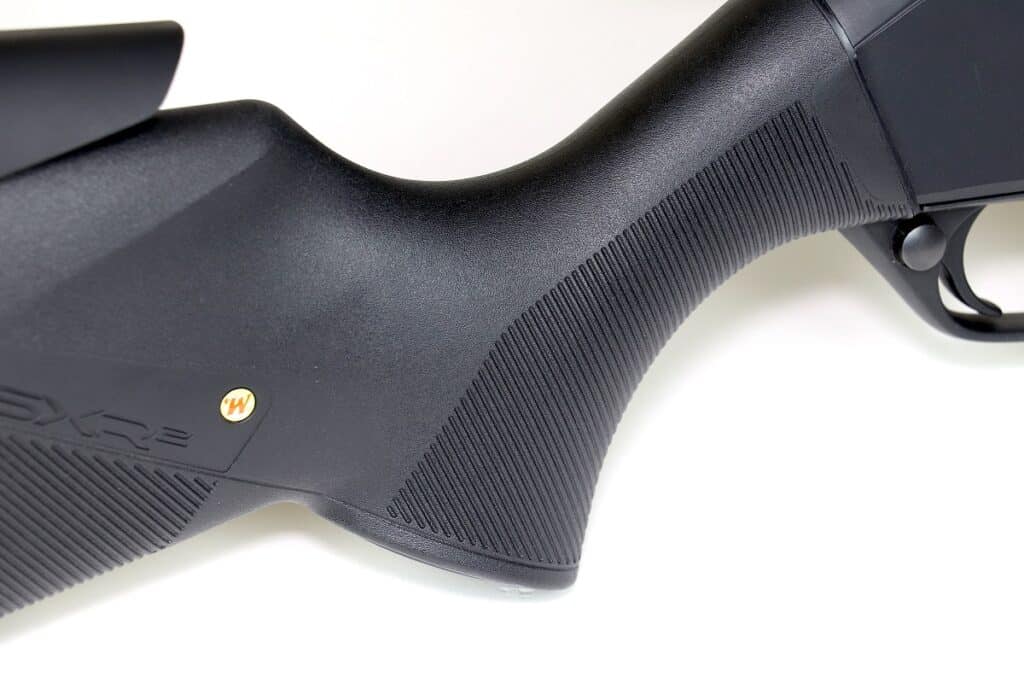
The stocks of both versions, Field and Composite, are more ergonomic: ambidextrous, they have a newly designed grip that fills the palm of the hand and a new grip that allows a firmer grip on the rifle. The same serration is present on the sides and on the base of the butt, which also has a new profile designed to improve control of the weapon: “We’ve fine-tuned it by 10%”, Browning assures us.
‘Tailor-made’ stocks
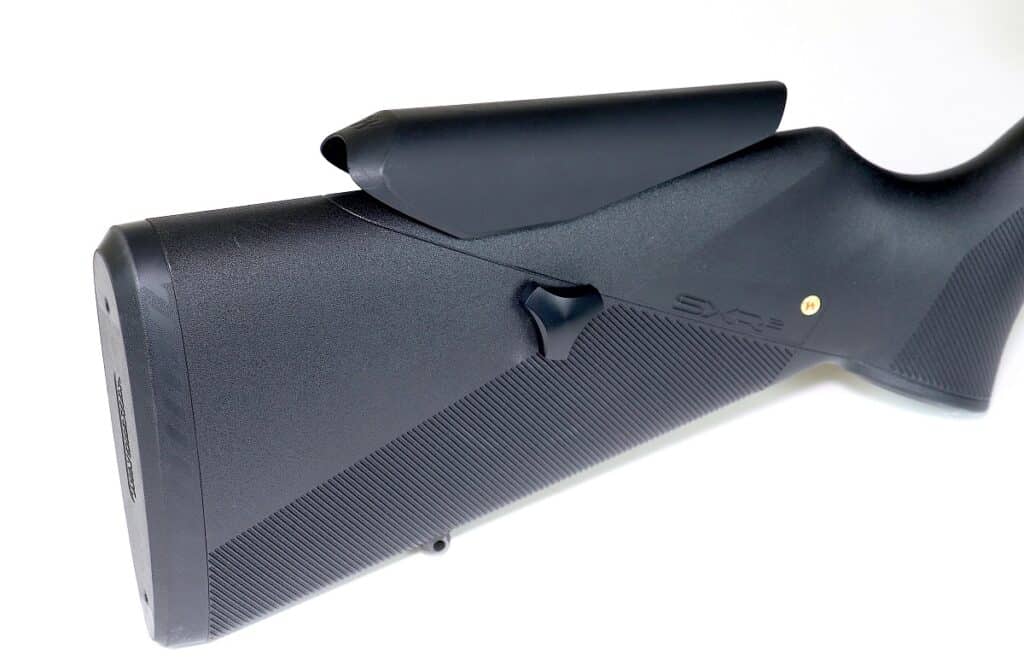
In both versions, the stock is adjustable in length and tilt. The Composite’s stock is also height adjustable – it has an adjustable spine – a very important detail, especially in a semi-automatic, as it ensures that you can aim quickly while keeping your face resting on the stock with the rear sight or with any type of scope. The length can be modified, as they are offered with a 15 millimetre Inflex II recoil pad, which can optionally be replaced by 25 and 30 millimetre pads. The tilt up, down, right or left is achieved by using wedges that are inserted between the stock and the frame.
The test: accurate even without rest
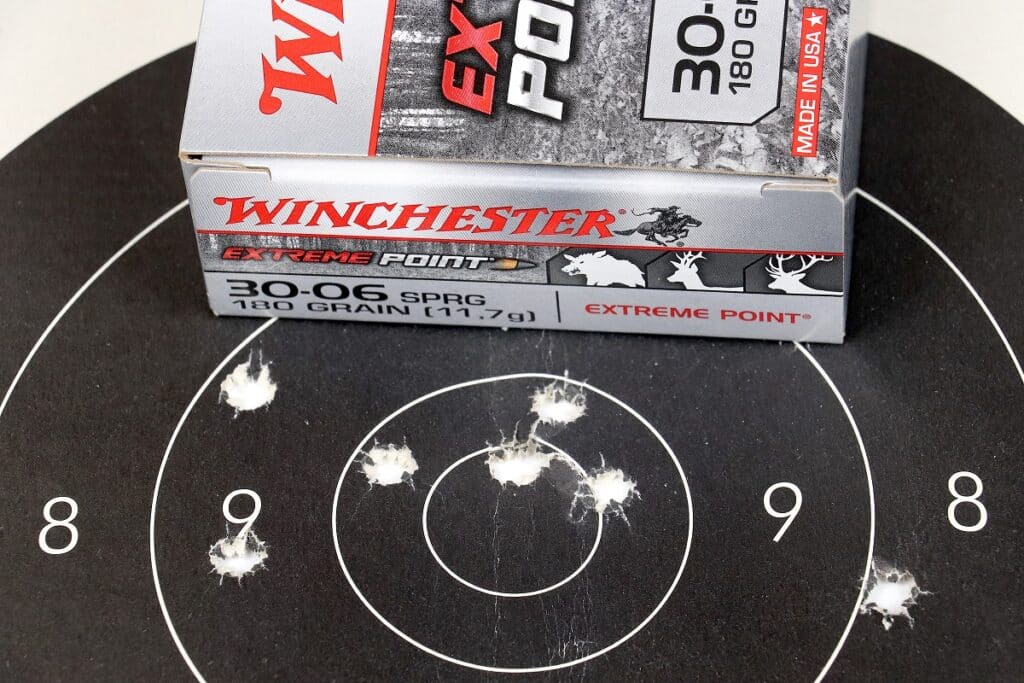
The 100-metre gallery of the Club Deportivo Centro shooting range in Valdemoro (Madrid) was the place where I tested this Winchester SXR2 Composite .30-06 calibre with Kite Optics K6 1-6x24i HD scope that Aguirre y Cía. had set up and fired at 50 metres. I used various types of cartridges as ammunition. To test it with support, Winchester Extreme Point with a 180-grain bullet, a very expansive ammunition and suitable for hunting in a driven hunt, therefore ideal for use in a rifle-viewfinder set like the one tested. The bullet has a very large plastic tip, a thin metal jacket and a lead core, and on impact it causes very serious wounds.
To test the operation and recoil when facing without support and firing three shots quickly, I used loose cartridges of various brands loaded with semi-bullets with blunt and sharp points, as well as ecological projectiles of weights between 150 and 180 grains, with which the rifle worked perfectly. The trigger is not 100% direct: when you operate it, it doesn’t break crisply, but you notice that it has a very short first time, although it doesn’t negatively influence the results. In fact, I managed to shoot several 10s at 100 metres with the 6x viewfinder. With a higher magnification scope, I’m sure the grouping would have been adequate for stalking. I have already tested this SXR2 twice, both times in Composite version and after this last occasion I still have the same good opinion about its performance. It is a very attractive semi-automatic rifle, ergonomic and excellent value for money.
Technical specifications
- Weapon: semi-automatic rifle.
- Calibre tested: .30-06 Springfield.
- Available calibres: .308 Win; .300 Win. Mag. and 9.3×62.
- Barrel length: 53.5 cm.
- Case: two-piece.
- Barrel: cold hammered in matt black.
- Frame: matte black aluminium with threaded holes for attaching the scope mount bases.
- Magazine: tilting magazine with capacity for two rounds.
- Bolt: rotating bolt with seven lugs.
- Trigger: regulated to medium pressure.
- Safety: two-position pin type.
- Overall length: 107 cm with 15 mm butt plate.
- Weight: 3.27 kg.
- Price: 1,199 euros.
- Marketed by: browning.eu
- Distributed by: aguirreycia.es

